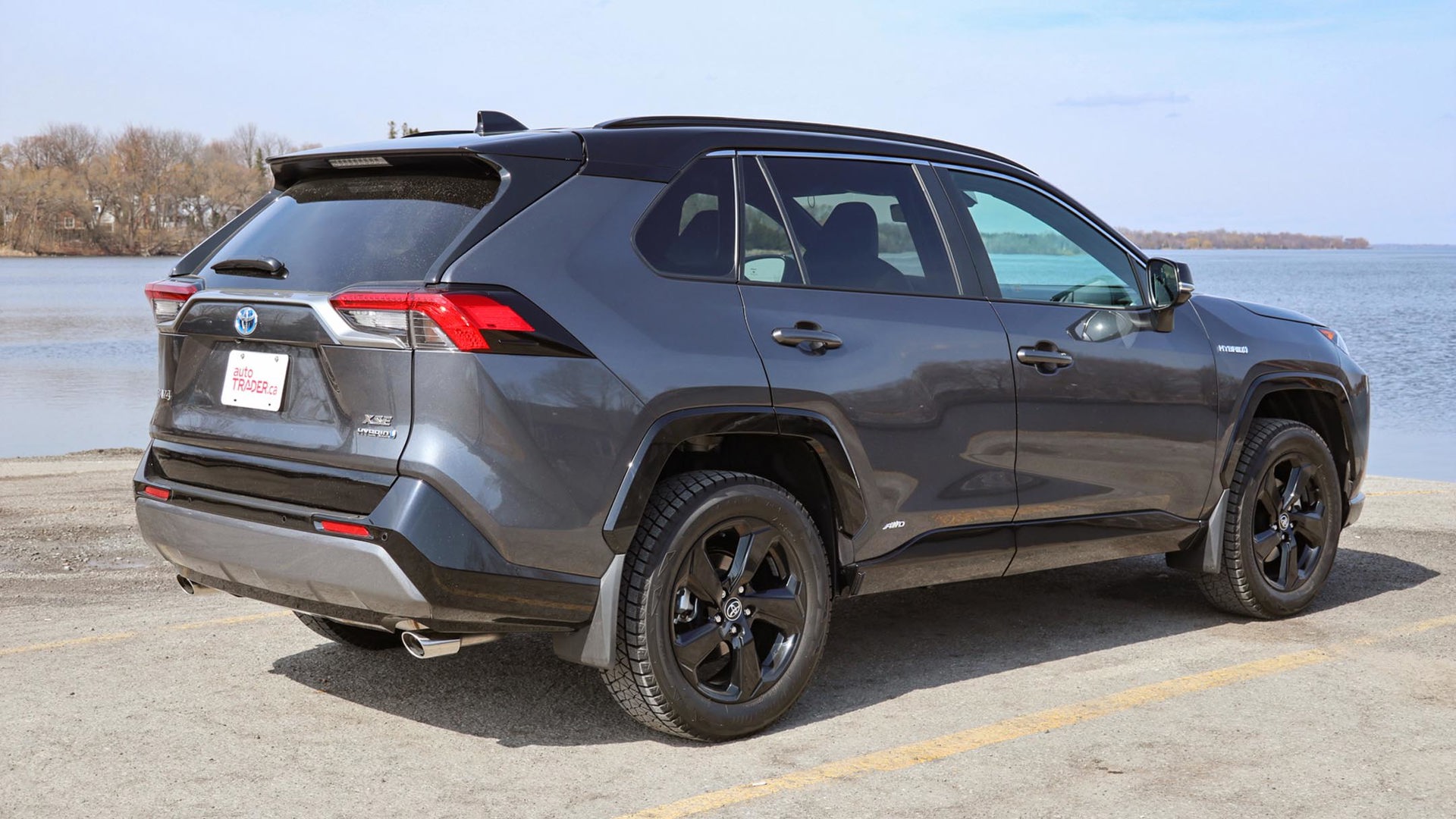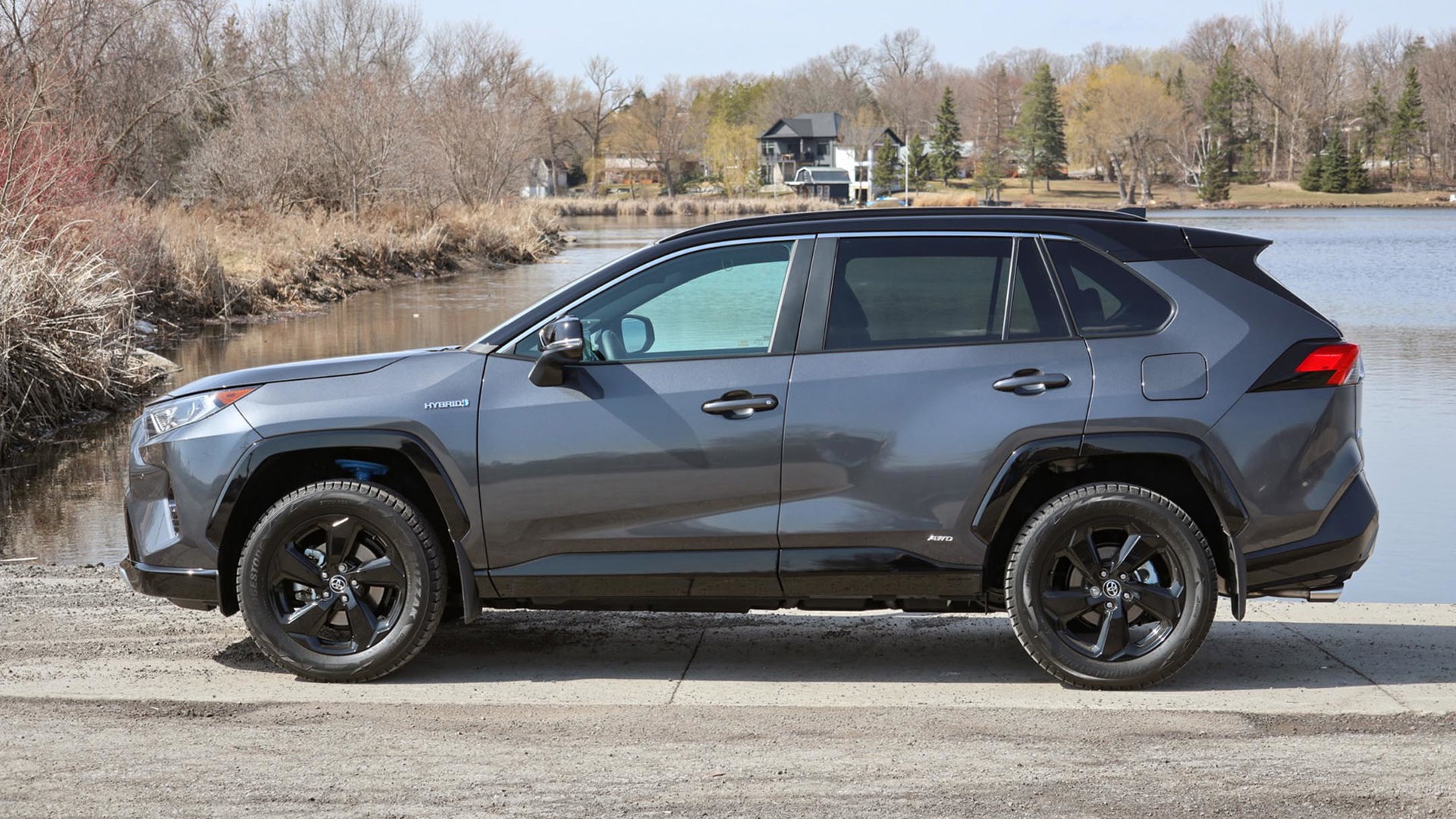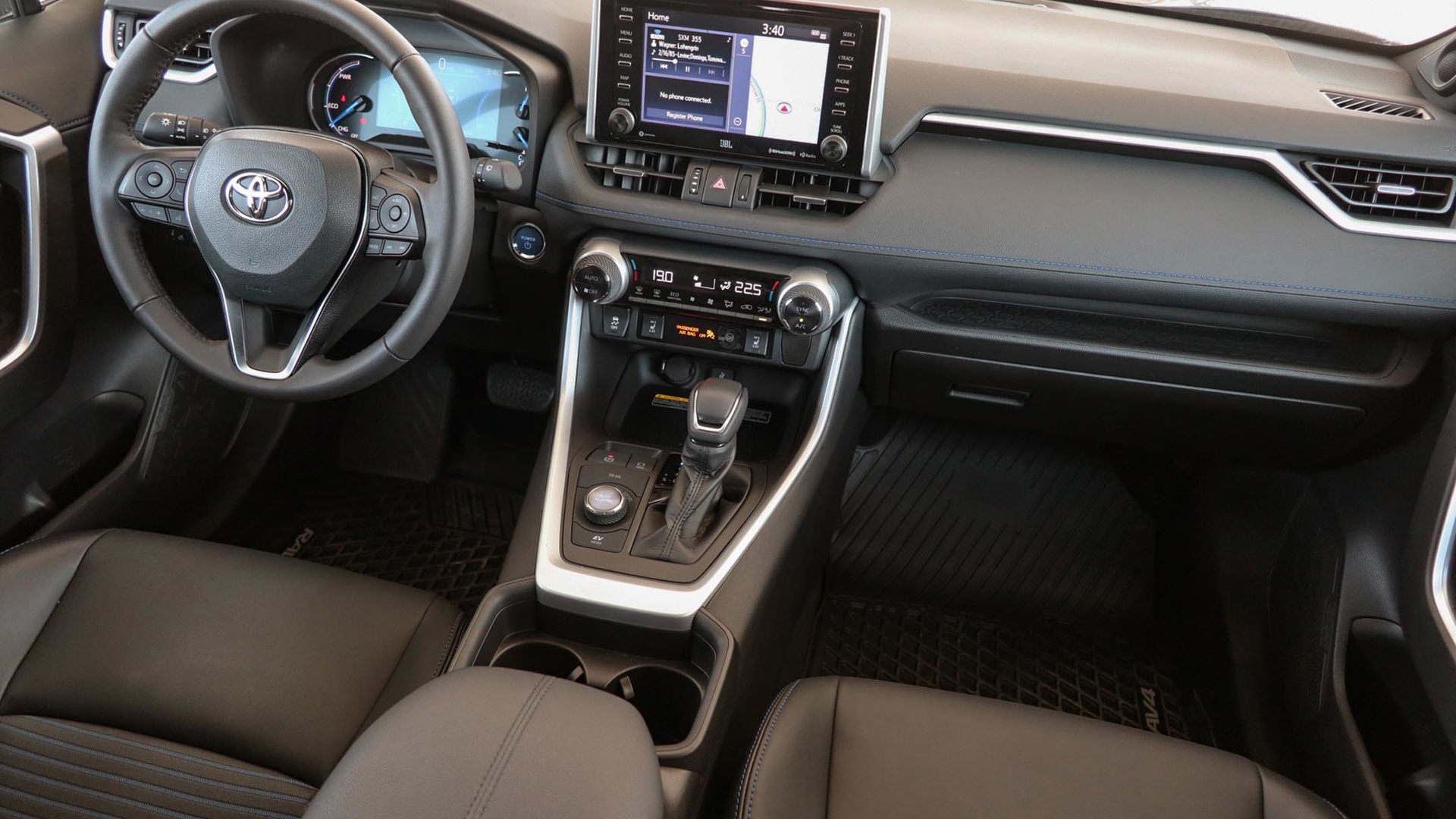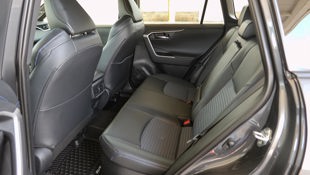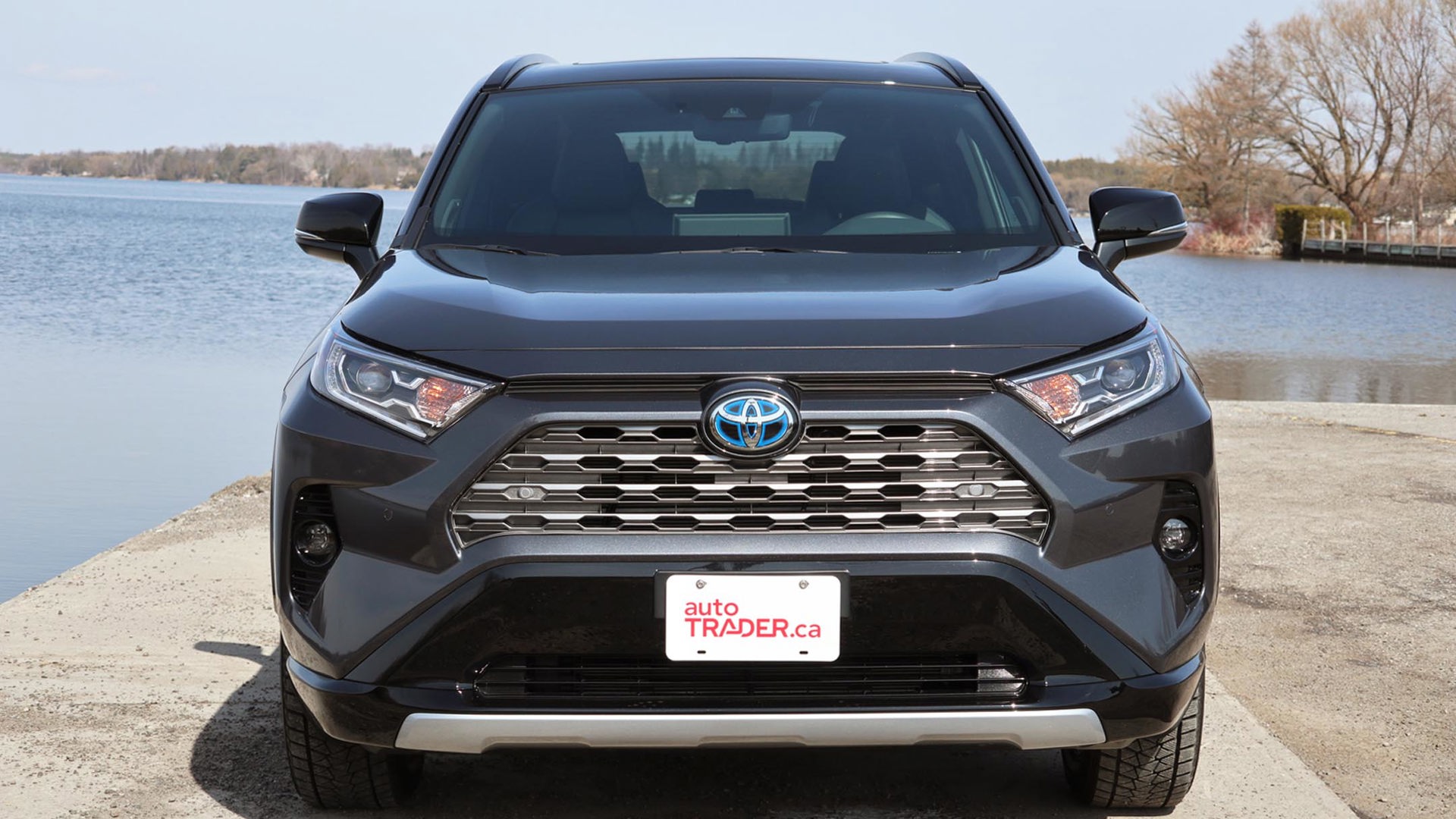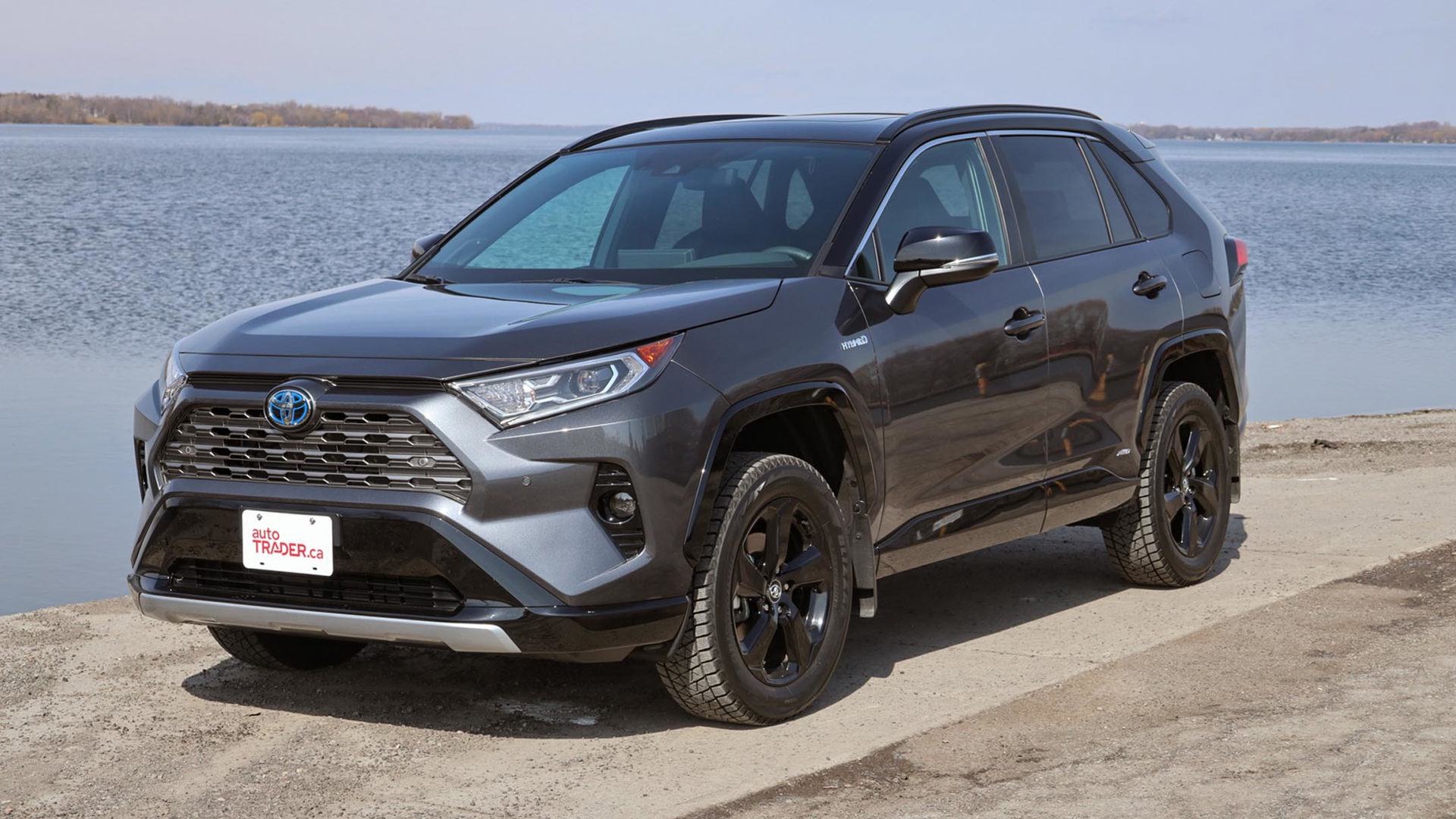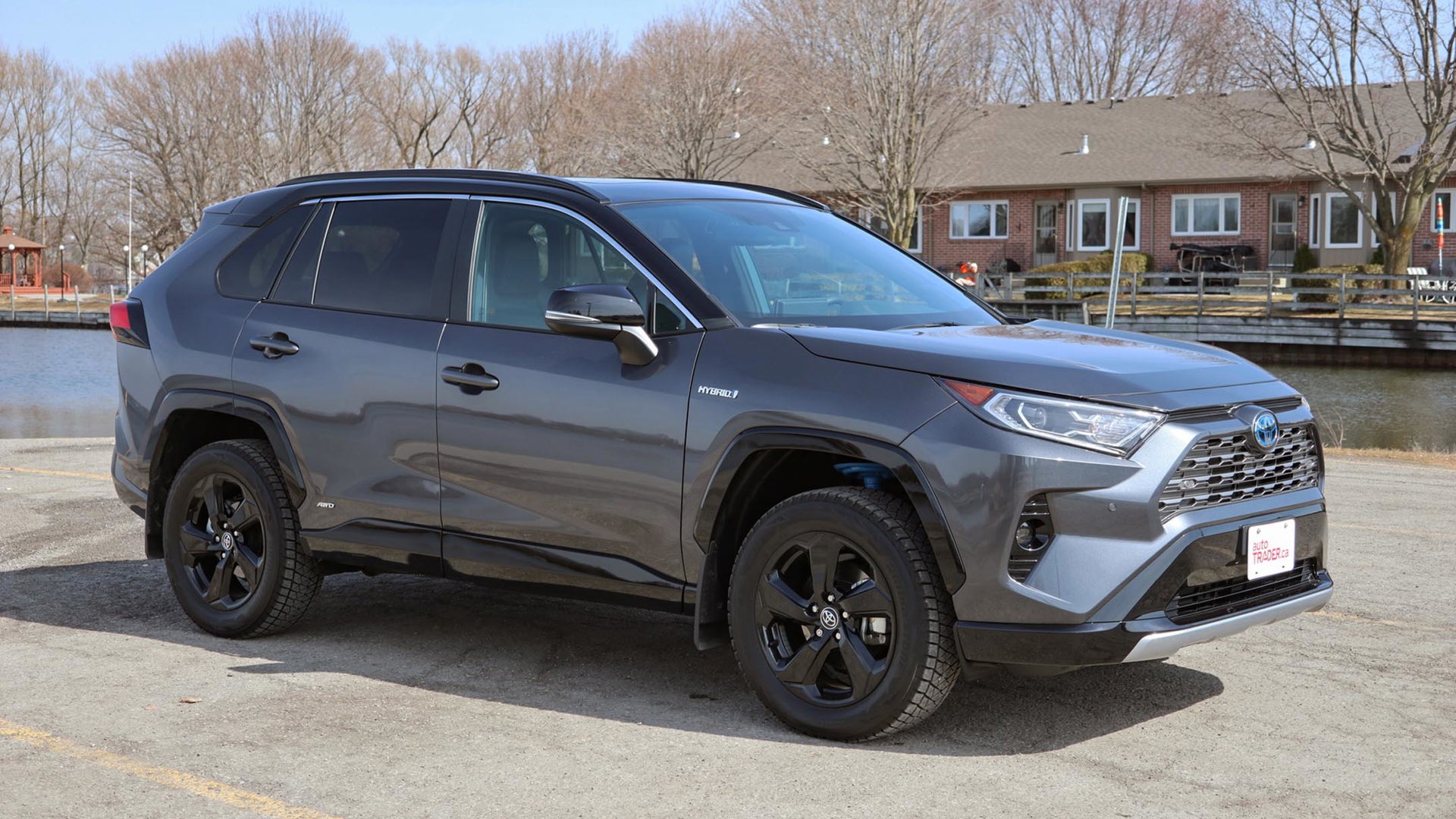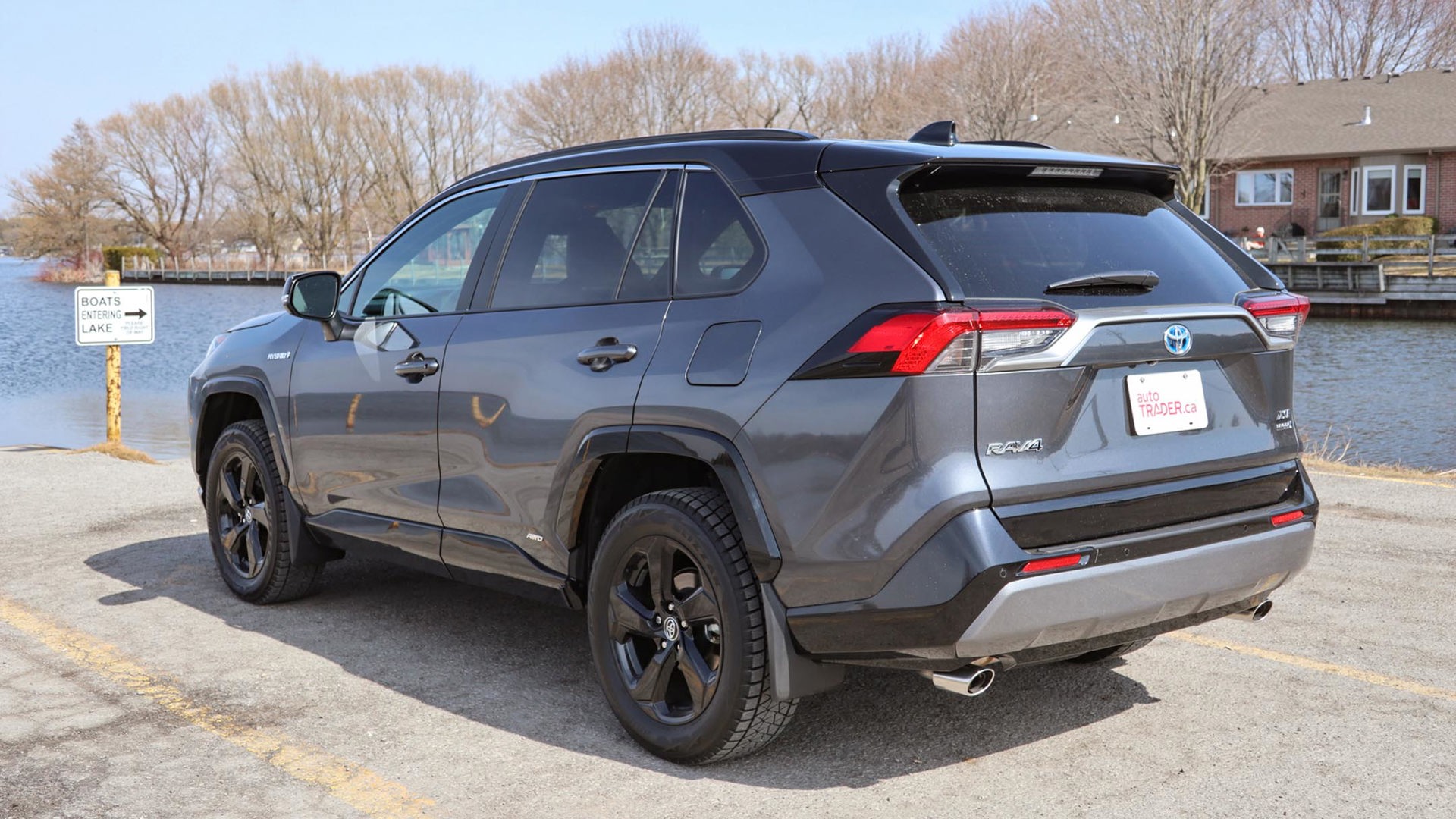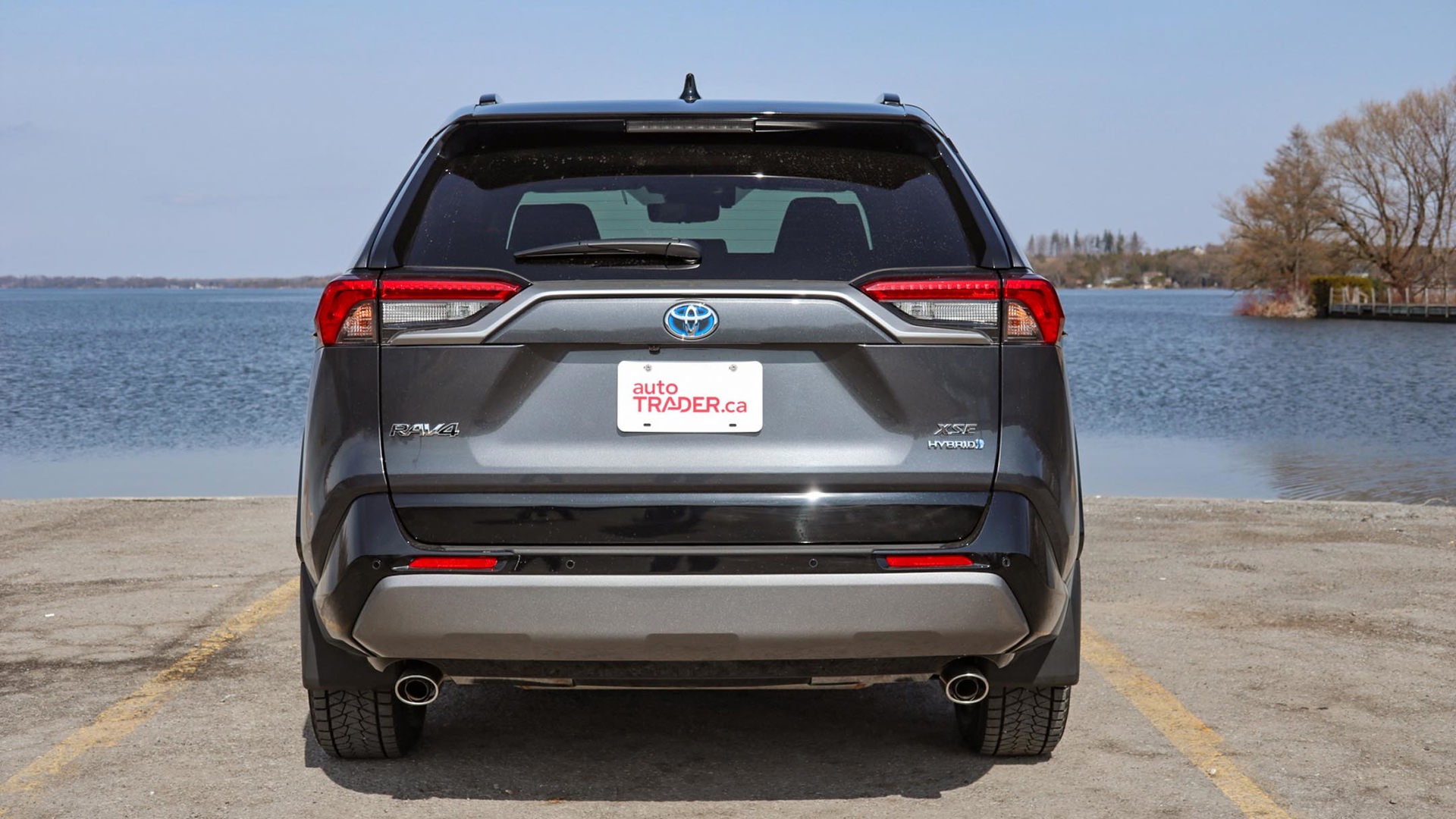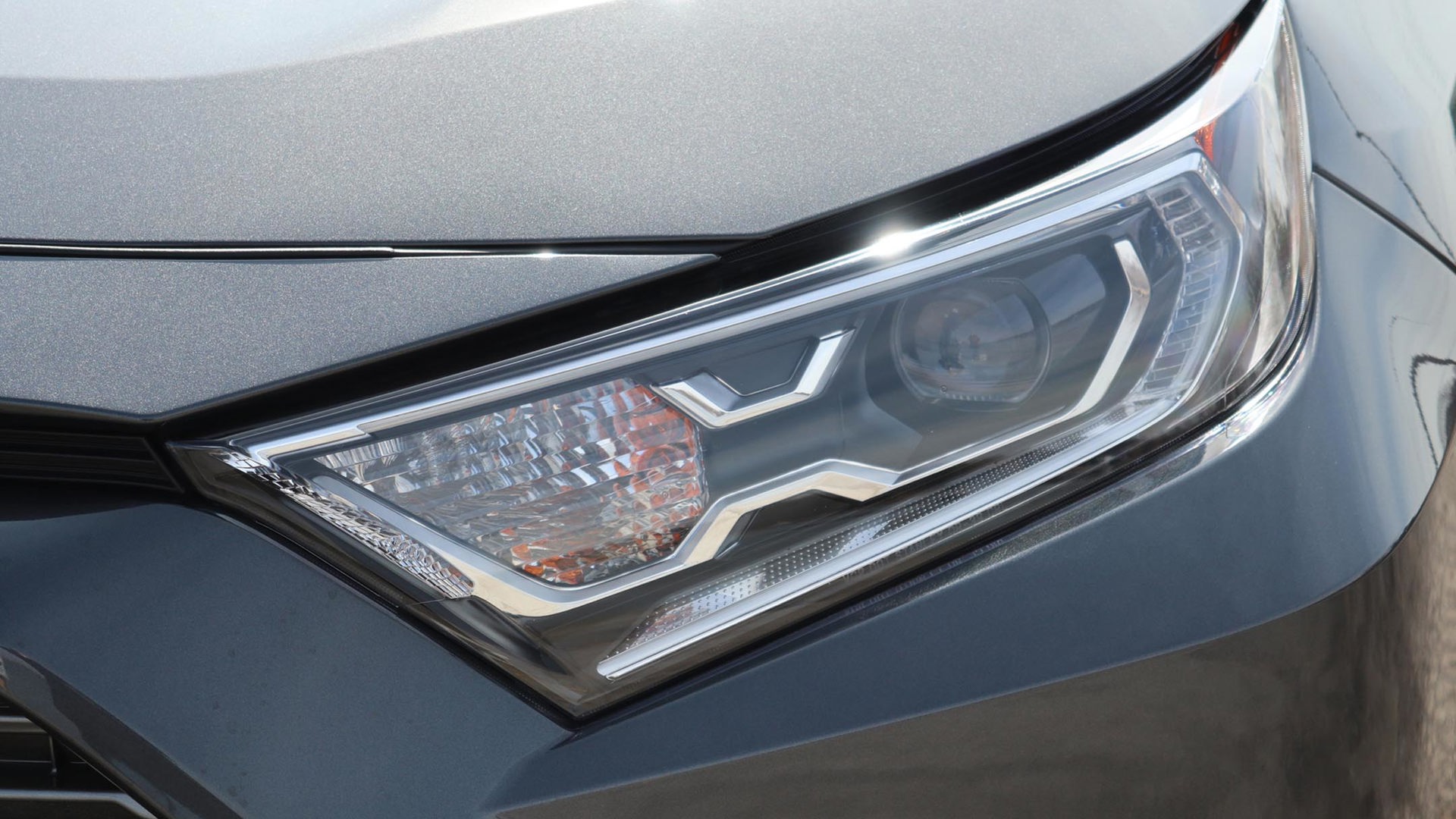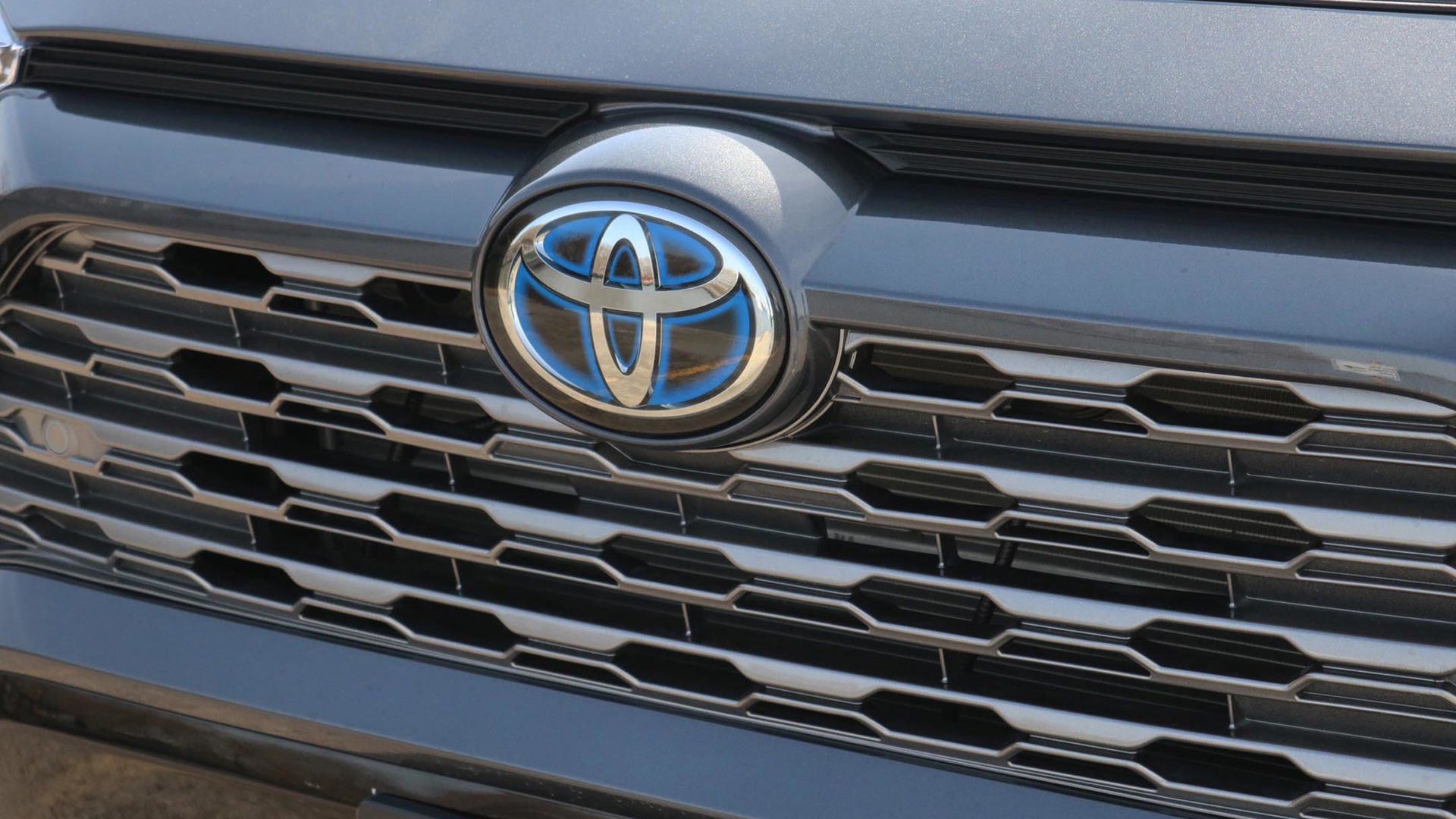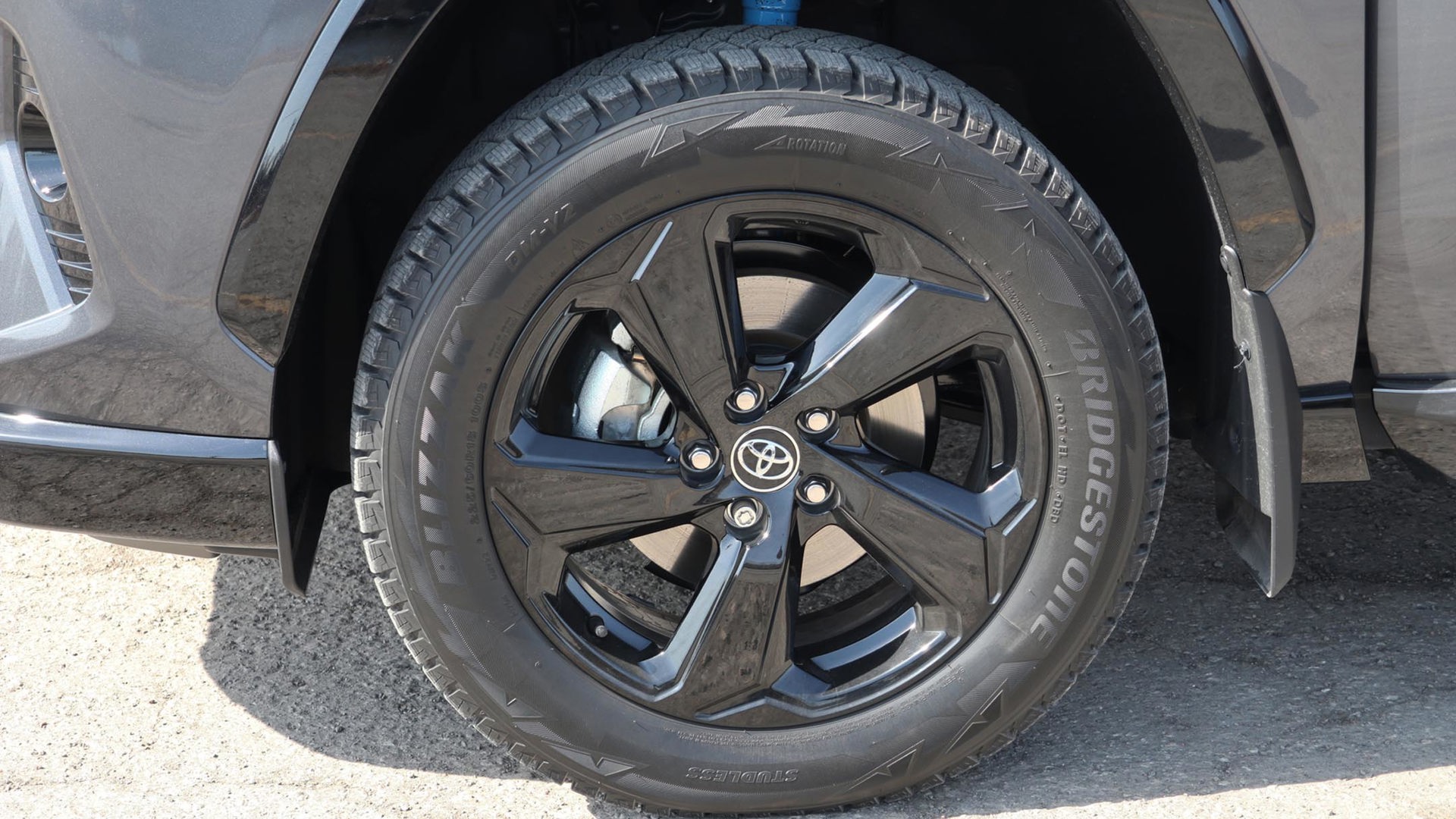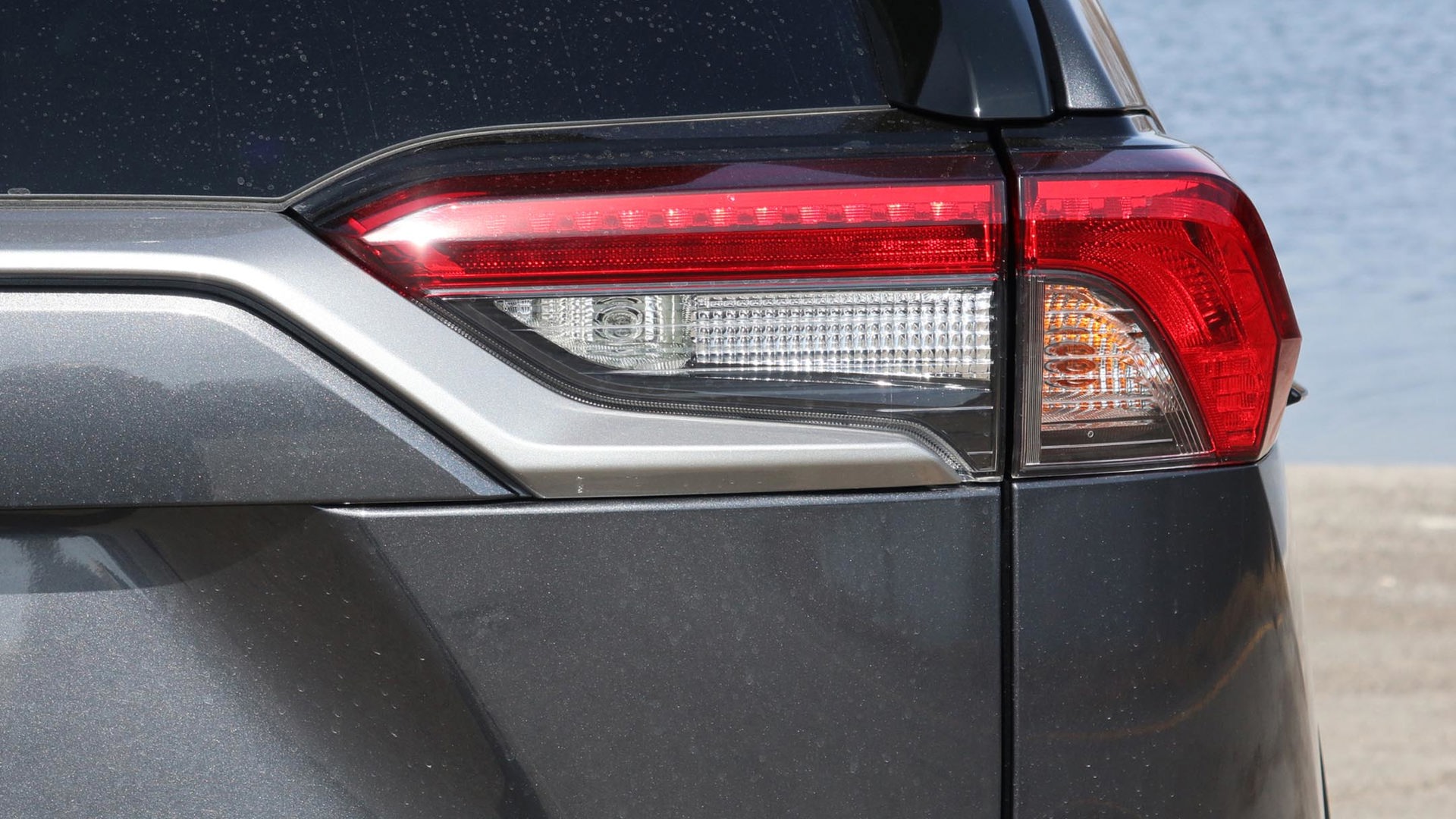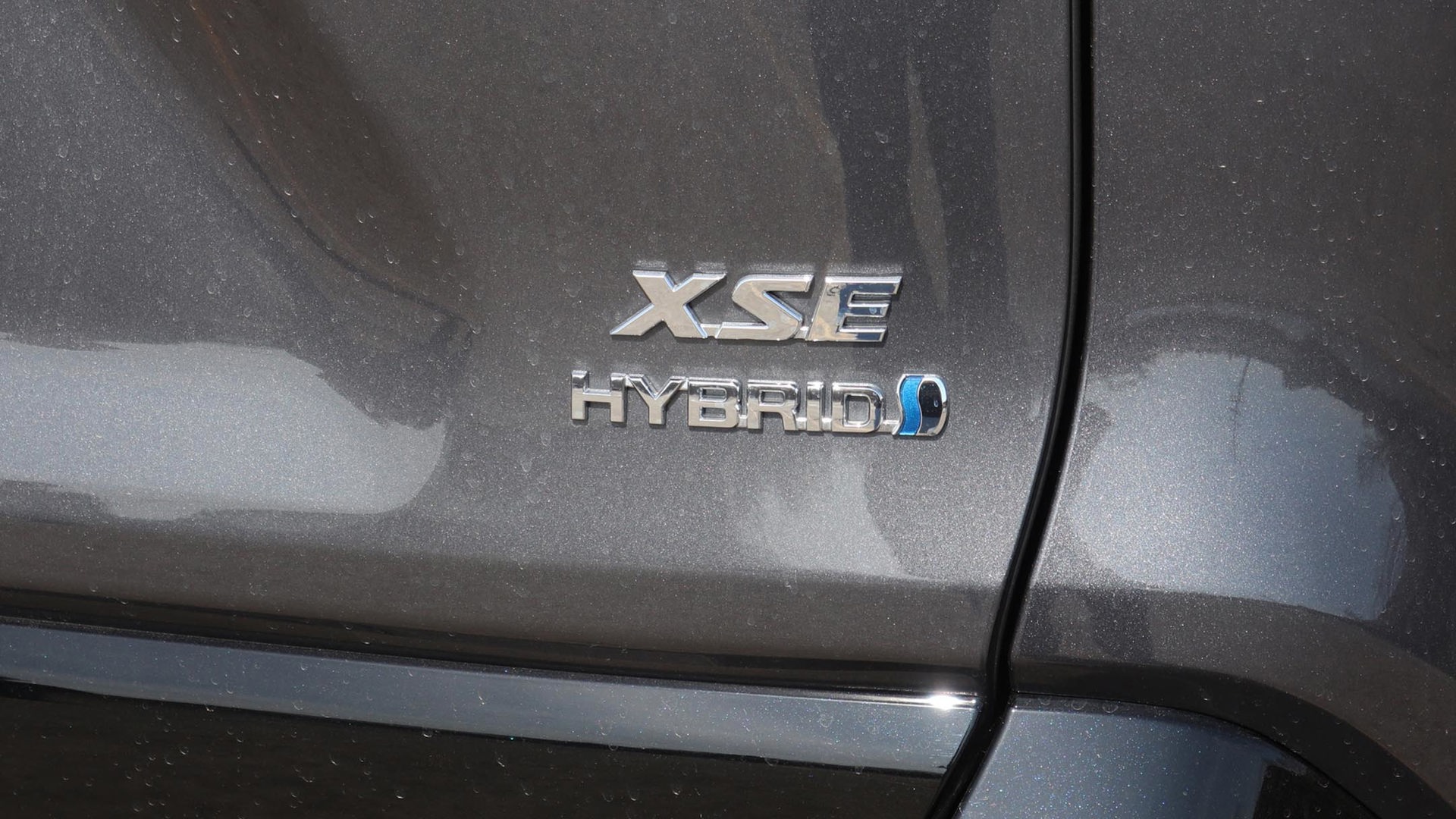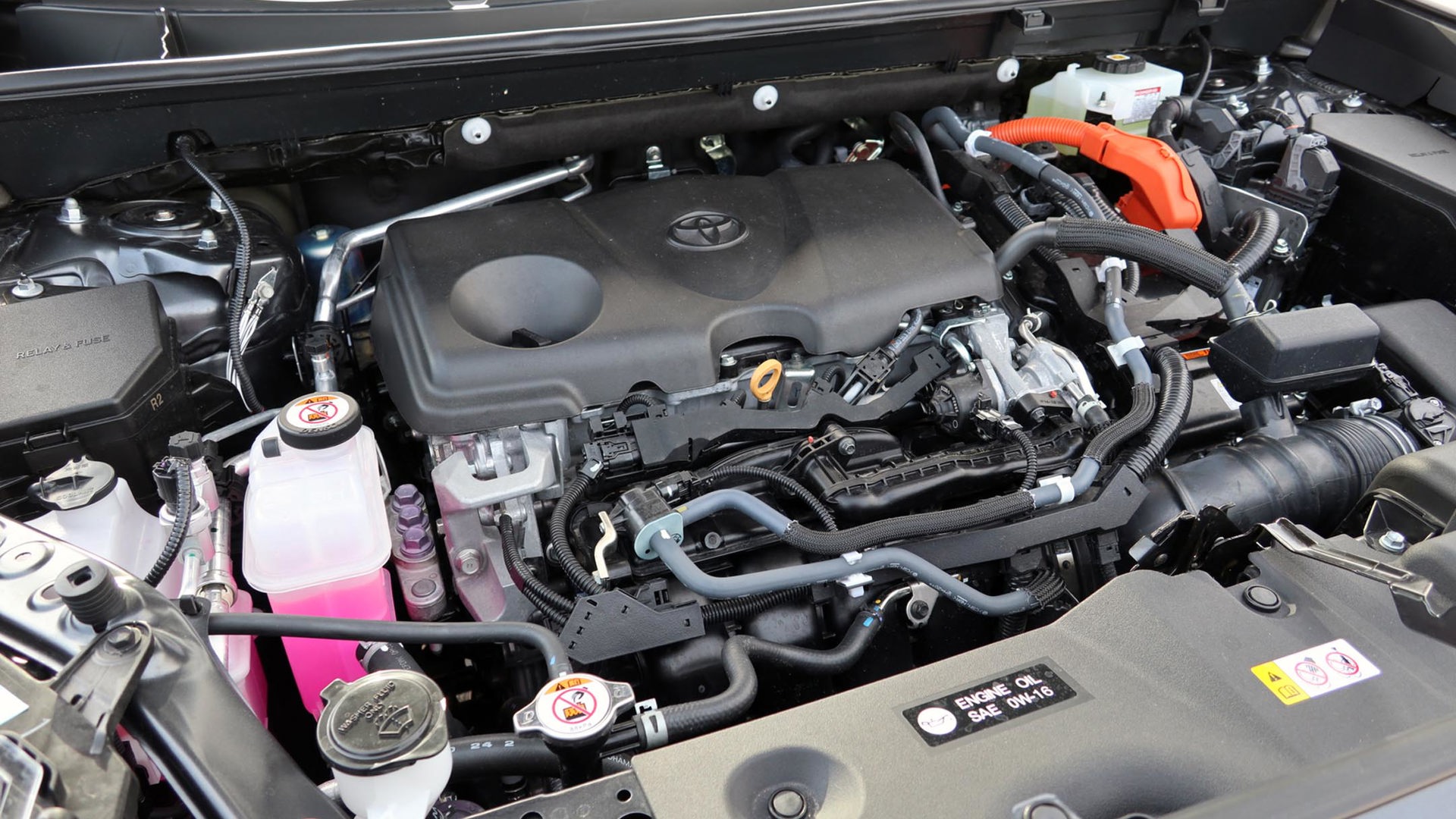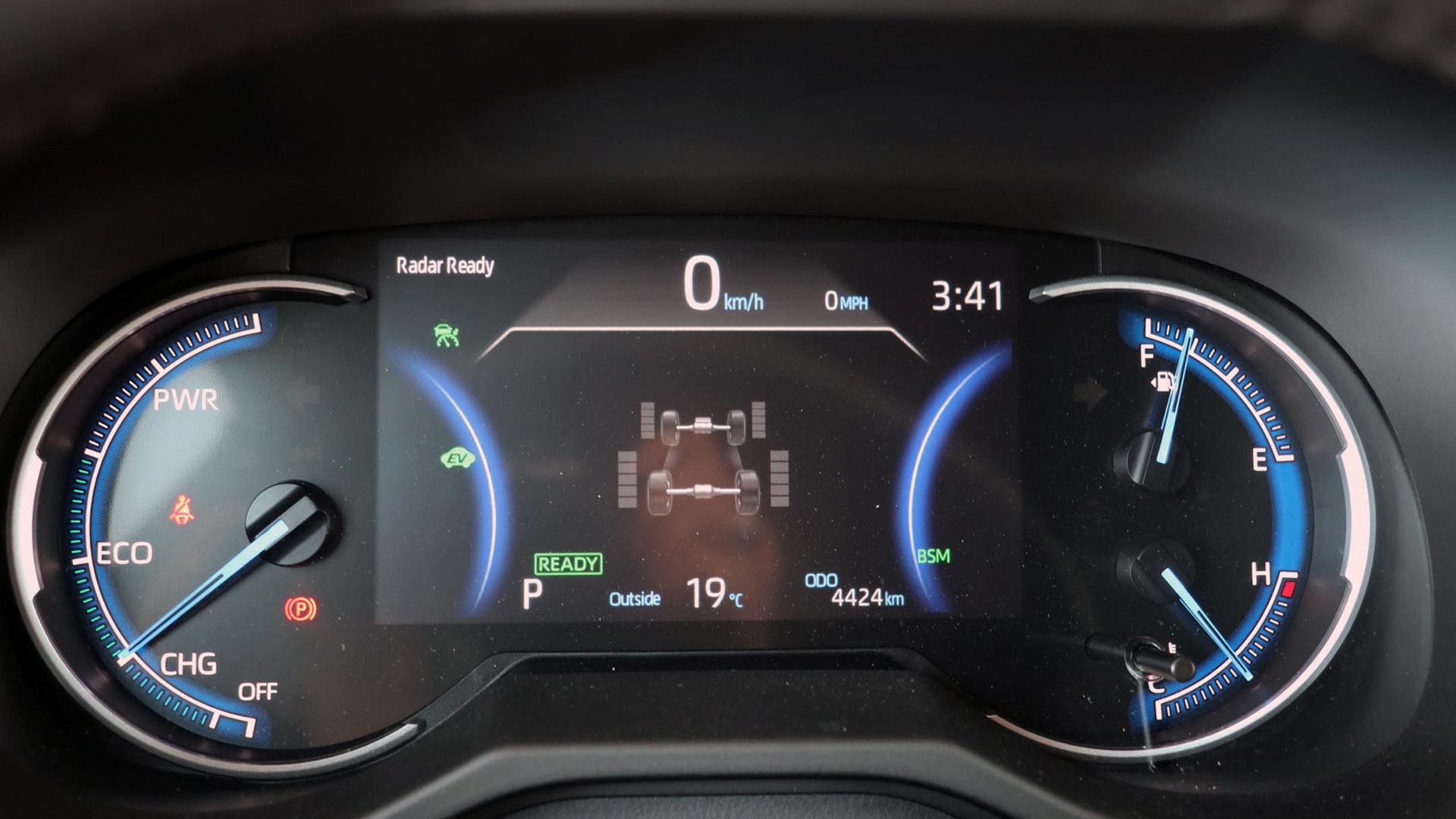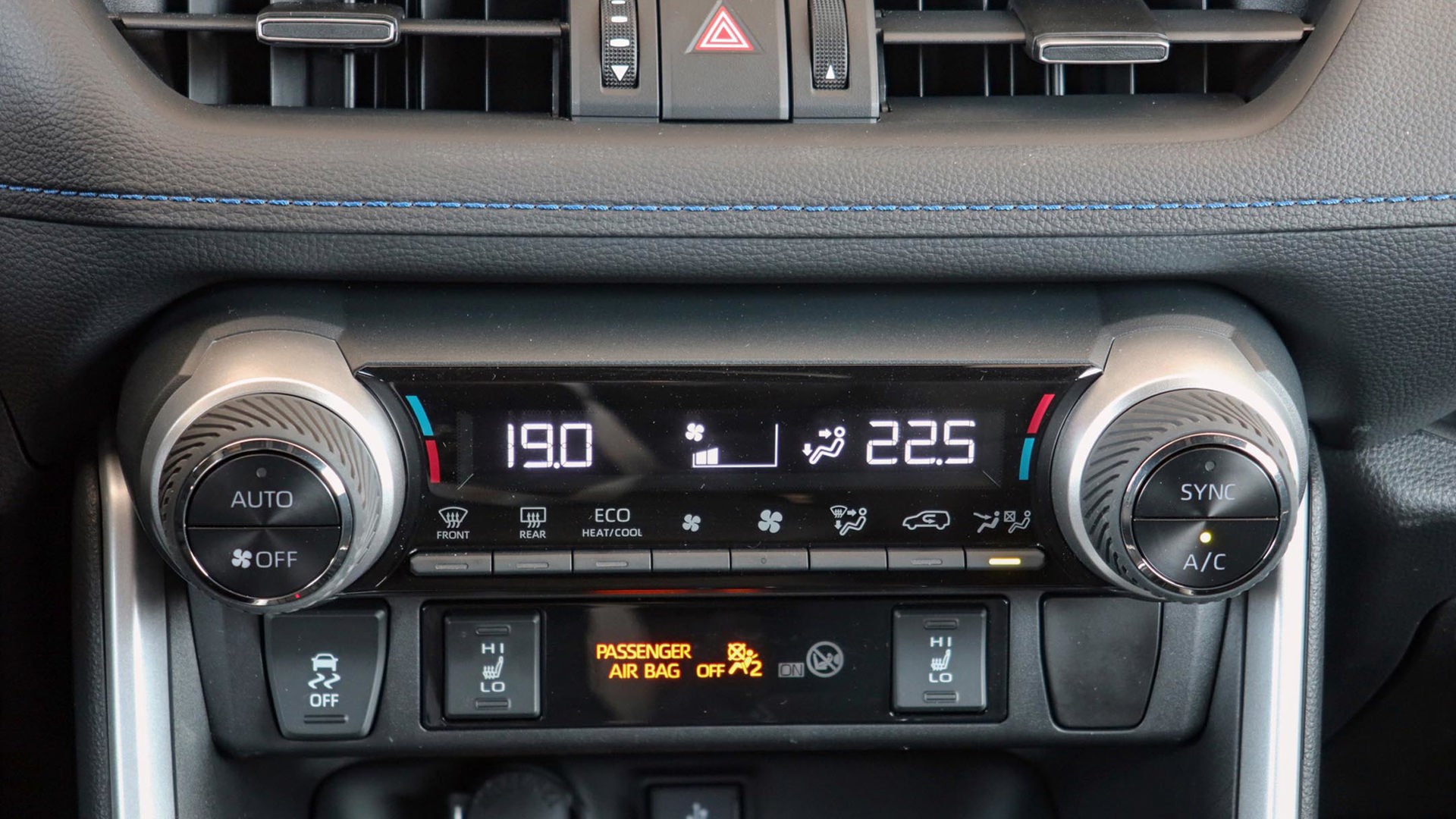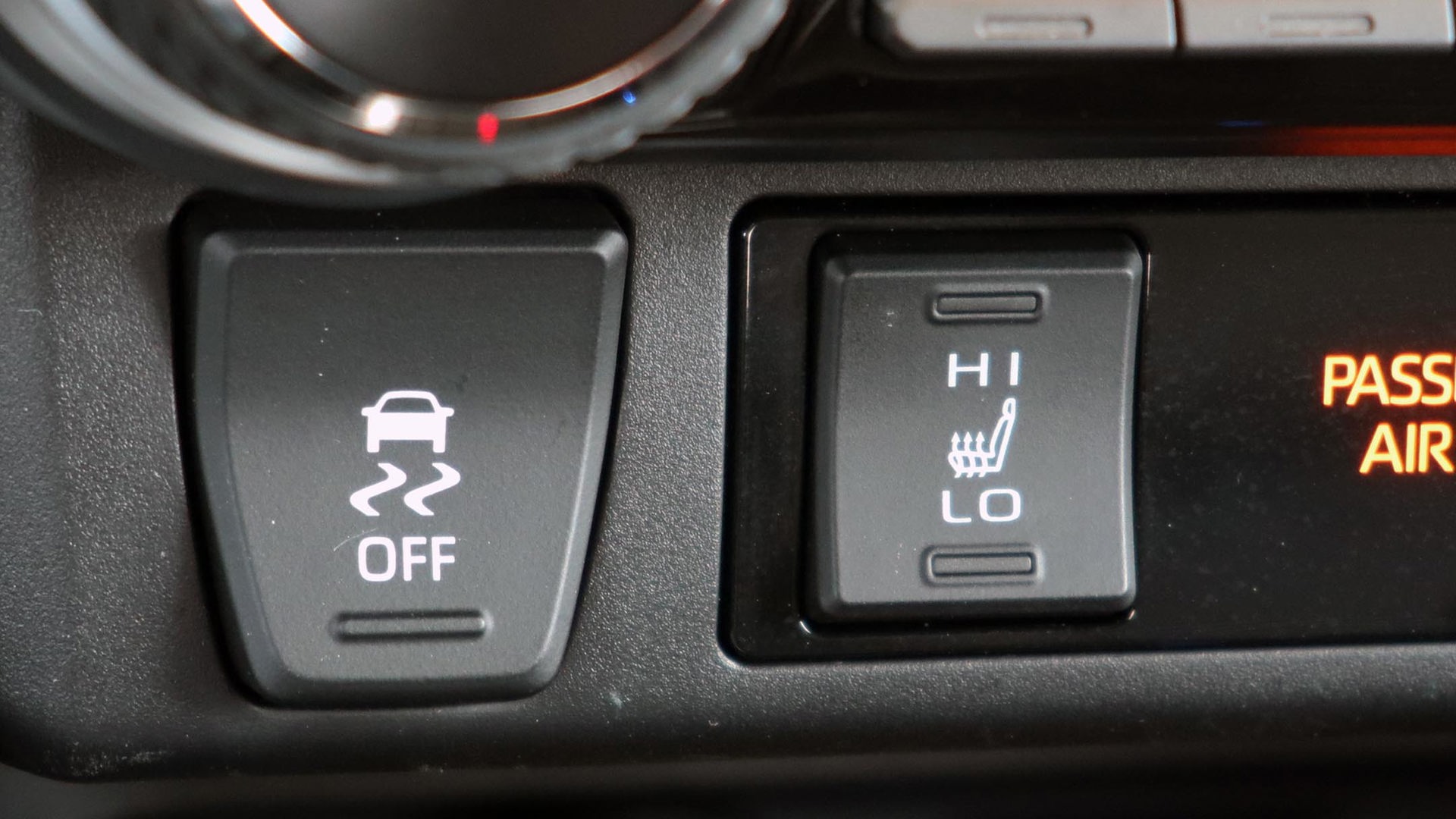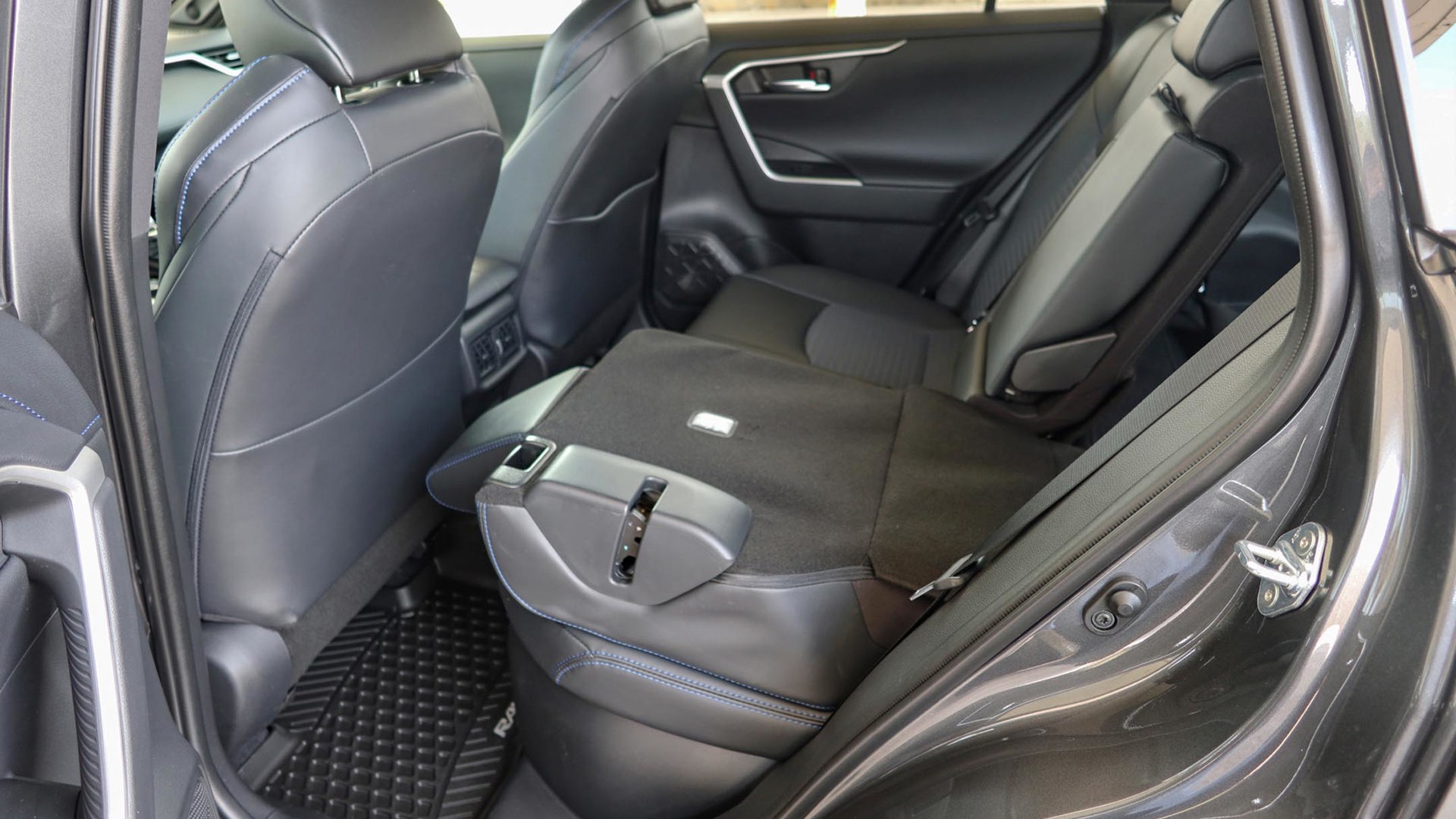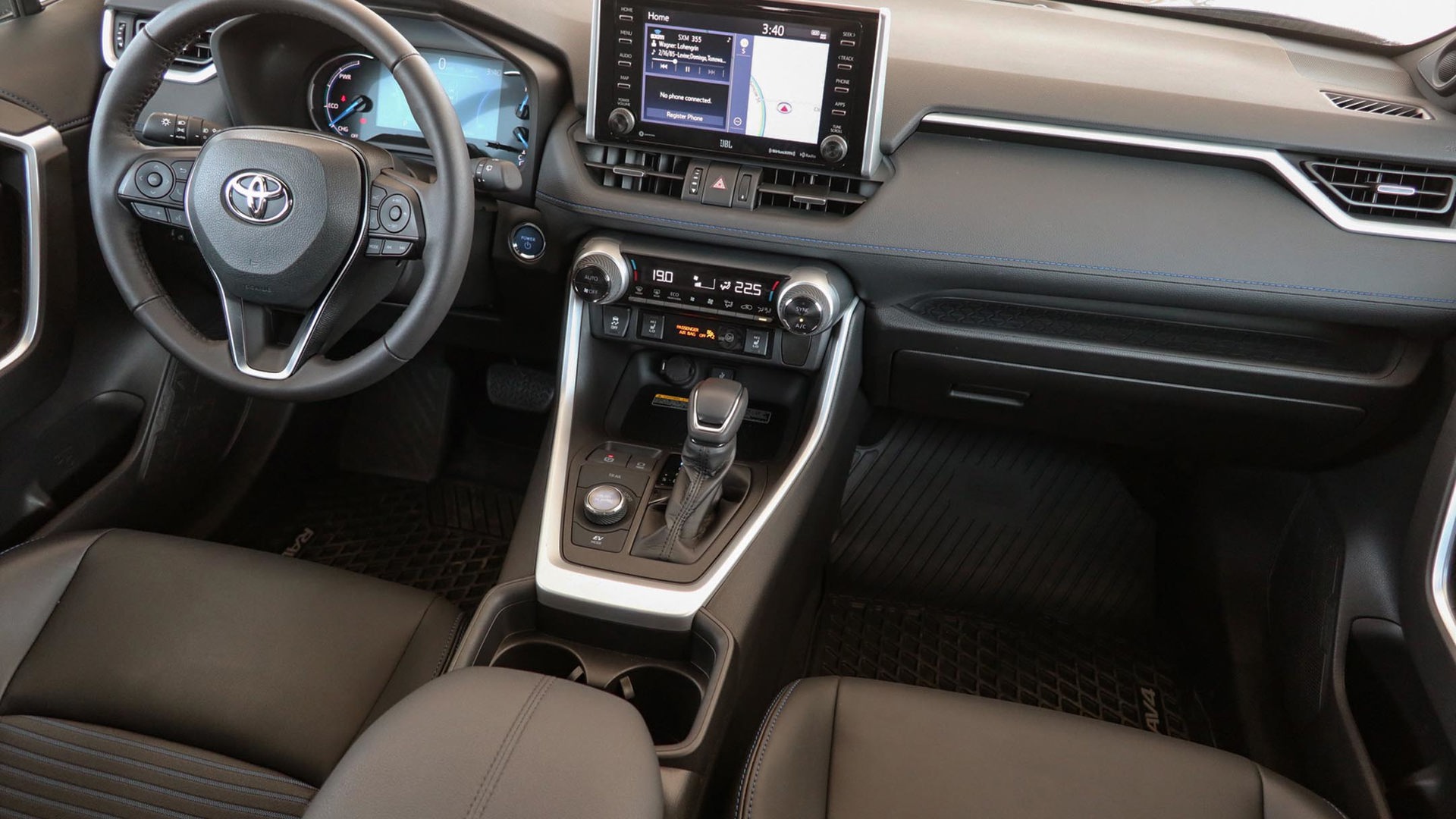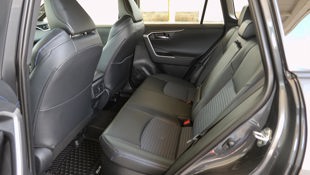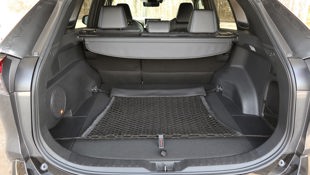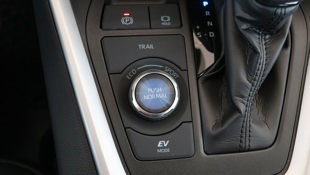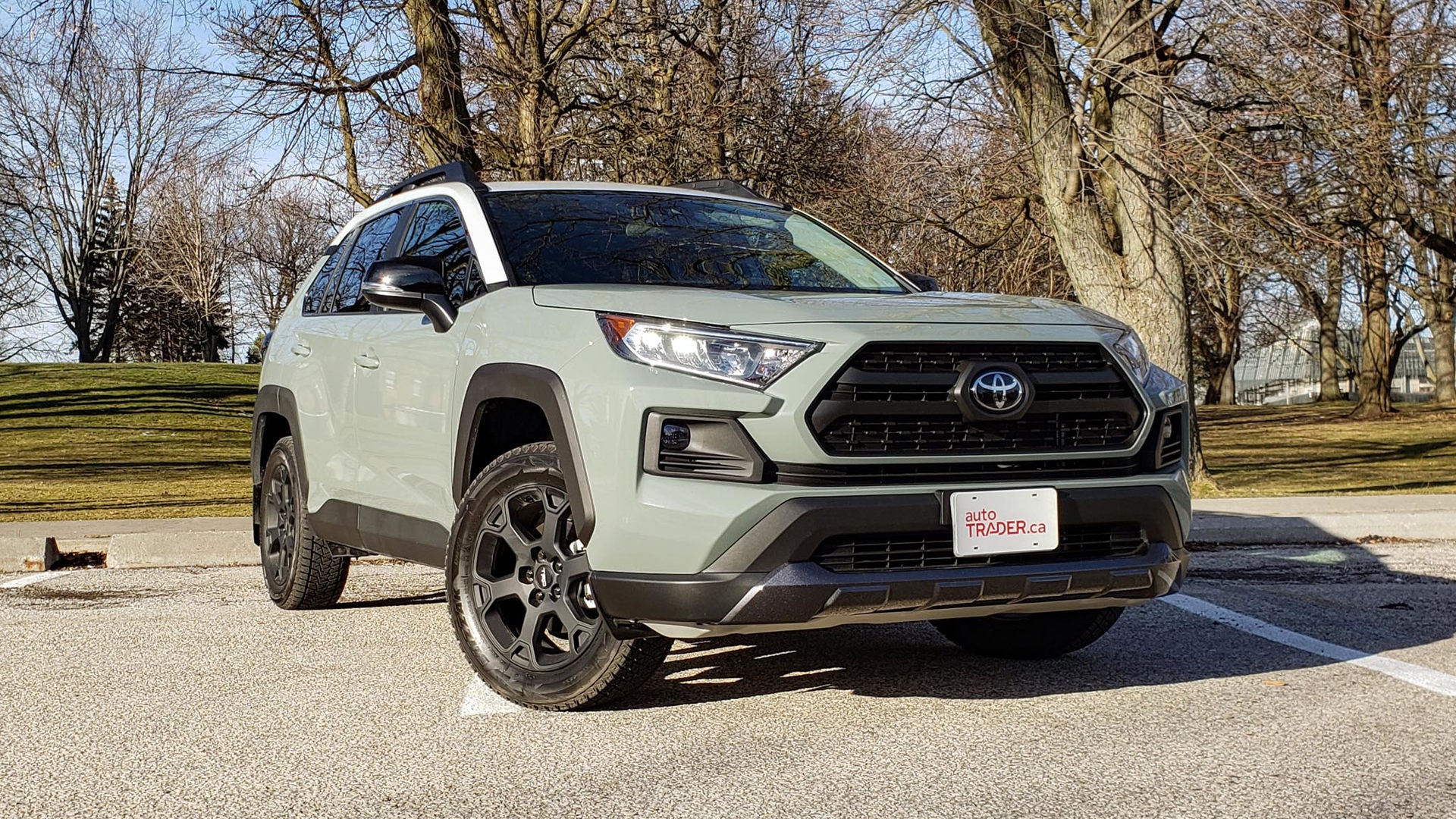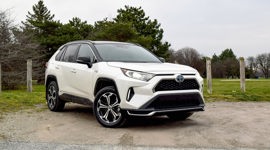 AutoTrader SCORE
AutoTrader SCORE
-
STYLING8/10
-
Safety9/10
-
PRACTICALITY8/10
-
USER-FRIENDLINESS8/10
-
FEATURES8/10
-
POWER8/10
-
COMFORT8/10
-
DRIVING FEEL8/10
-
FUEL ECONOMY9/10
-
VALUE7/10
If you take pickup trucks out of the equation, it’s the Toyota RAV4 that’s the best-selling vehicle in Canada.
It comes in a handful of ways, including as a conventional gas-powered model, a plug-in hybrid (PHEV) with some dedicated electric driving range, or as my tester: the 2021 Toyota RAV4 Hybrid. The regular RAV4 is available in a front-wheel-drive version, starting at $28,590, and with all-wheel drive (AWD) ranging from $30,690 to $41,690 before fees and taxes. The hybrid comes with standard AWD, and starts at $32,950 in LE trim and rises to $43,350 for the Limited. My tester was the XSE with its available Technology package, which rang in at $42,170 before freight and taxes.
Styling: 8/10
The RAV4 has come quite a way from its quirky beginnings in the 1990s – for a while, you could even get a two-door with a foldable rear roof. It’s of course much larger now, and it wears its angular proportions well. The standard wheel size is 17-inch, but the XSE bumps them up to 18-inch black alloys. Also included are LED projector headlights, a power tailgate, and a power sunroof.
The interior continues that chunky, angular styling and it looks good – especially since it includes big dials and buttons for controls. The dark interior is livened up with good-looking metallic accents and contrasting stitching. The overall impression is a satisfying combination of technology and practicality.
Safety: 9/10
The RAV4 earns the top five-star rating from the United States National Highway Traffic Safety Administration (NHTSA), as well as a Top Safety Pick from the Insurance Institute for Highway Safety (IIHS).
All RAV4 trims come with a bundle of driver-assistance features, including adaptive cruise control, emergency front braking with pedestrian and bicycle detection, lane-keeping assist, and automatic high-beam headlights. Blind-spot monitoring with rear cross-traffic alert is also standard, and, of course, so is the back-up camera that’s now mandatory on all new vehicles.
Features: 8/10
In addition to the safety features mentioned above, all RAV4 Hybrid models include a seven-inch touchscreen with Apple CarPlay and Android Auto, dual-zone automatic climate control, heated front seats, and heated mirrors.
My XSE tester then added such items as rain-sensing wipers, a power sunroof, power driver’s seat, heated steering wheel, power tailgate, push-button start, fabric and faux-leather seats, wireless charging, integrated garage door opener, remote starter, digital instrument cluster display, and eight-inch infotainment touchscreen including navigation, and a one-year trial of Toyota’s remote services.
User Friendliness: 8.5/10
I like simplicity in a vehicle, and for the most part, the RAV4 delivers. The cabin temperature is controlled by large dials with knurled rubber around them, so they’re easy to grab and turn – even with gloves on. The fan and vent modes are a little tougher, using smaller toggles, but it’s back to large switches for the heated seats. The tablet-style infotainment screen has hard buttons to bring up the menus, and once you’re there, the icons are large and intuitive.
It’s easy to get in and out of the RAV4, with its wide-opening doors and not-too-wide sills. However, once you’re inside, the door pull-handles need some work. They’re at the front of the door, so you have very little leverage when pulling them closed, especially on a windy day. A hand-hold farther back on the armrest would be very much appreciated.
Practicality: 8/10
Between the RAV4’s size, and all-around visibility from the driver’s seat, it’s a good fit for crowded urban areas. There are large door pockets, and for small-item storage, there’s a cubby ahead of the shifter. Mine was occupied by the wireless charger, but that can be turned off and the space used for storage.
The RAV4’s tailgate opening is wide, and the liftover is relatively low, so it’s easy to get items into the trunk. A tonneau cover is standard in the XLE trim and up. The rear seats are easy to fold but they don’t go completely flat. That’s due to the hybrid battery being under them, although it’s better than having it chew up the rear cargo space. If you’ve got too much stuff, the RAV4 Hybrid can tow as much as 973 kg (1,750 lb).
Comfort: 8/10
With its power driver’s seat, and an upholstery blend of fabric and faux leather, along with supportive construction, my RAV4 offered long-haul comfort. The rear seats are a little flat but still well-constructed, and legroom back there is good. However, while rear-seat headroom is on par with many of its competitors, the RAV4’s front-seat scalp-clearance is between 58 and 83 mm (2.3 and 3.3 in) less than that of the Subaru Forester, Ford Escape (which also comes as a hybrid), or Nissan Rogue.
The RAV4’s cabin is quiet, and the vehicle feels tight and sturdy. The ride is more on the firm side, but it’s still pleasant, and only the nastiest potholes make their way up to the occupants.
Power: 8/10
The RAV4 starts with a 2.5L four-cylinder that, on its own, makes 176 hp and 163 lb-ft of torque. It’s mated to dual electric motor-generators under the hood, which boost net horsepower to 219. That combined power goes to the front wheels through an automatic continuously variable transmission (CVT), while a separate electric motor in the back drives the rear wheels. The lithium-ion hybrid battery self-charges through regenerative braking, and while you can get a plug-in version of the RAV4, this one doesn’t come with a cord.
You’re not going drag-racing with this model, but it has enough power for pretty much all driving needs, including highway passing. Unlike a gasoline vehicle with AWD, which has a mechanical connection between the front and rear axles, the RAV4 uses an electric motor to drive the rear wheels when needed for extra traction or stability, without using extra fuel.
Driving Feel: 8/10
The hybrid system switches automatically between gasoline and electricity (or a combination of the two) depending on driving conditions. There’s an “EV Mode” button that keeps the RAV4 on electricity alone, but only at low speeds and with a very light foot – which it does on its own anyway, and the button’s really just a waste of console space. The “Trail” button is far more useful, as it optimizes torque distribution to the wheels when needed for deep snow or slippery conditions.
The RAV4 drives as you’d expect of an everyday commuter. The steering is light, and while there isn’t a lot of feel to it, the vehicle responds quickly and accurately. It’s smooth on turns, and feels well-planted on the highway. The brakes have a bit of resistance to them, which is common with hybrids since they capture kinetic energy when they slow down, but they stop quickly and confidently, and you only have to spend a bit of time behind the wheel before you’re used to them.
Fuel Economy: 9/10
When I gassed up the RAV4 Hybrid after my week with it, I thought I’d neglected to fill it all the way because the bill was so small. It’s rated by Natural Resources Canada (NRCan) at 5.8 L/100 km in the city, at 6.3 on the highway, and 6.0 L/100 in combined driving; and I got 5.8 L/100 km overall.
Hybrids get a better rating in city driving over highway, the opposite of conventional cars, because they can drive more on their batteries at lower speeds. Among non-plug-in hybrid SUVs, only the Ford Escape Hybrid is rated better than the RAV4 at 5.9 L/100 km combined, with AWD. A non-hybrid RAV4, depending on the trim level, is rated between 7.9 and 8.5 L/100 km in combined driving.
Value: 7.5/10
A hybrid’s fuel-sipping attributes usually come with a higher price tag than non-electrified versions, and that’s the case here. In base LE trim with AWD, a regular RAV4 is $30,690. It’s $2,260 to get that same trim as a hybrid. NRCan estimates you’ll save $475 in gas with the hybrid, or a little more than four and a half years to make up the difference.
You’ll have to figure out if a hybrid is right for you. For many, its ability to run fuel-free and with reduced emissions is worth the difference. While both the regular and hybrid RAV4 models have five-year/100,000-km warranty coverage on the gasoline engine and mechanical driveline components, the hybrid adds eight-year/160,000-km coverage on components related to the hybrid system, and 10-year/240,000-km warranty on the hybrid battery.
The Verdict
Adding it all up, it’s easy to explain the RAV4’s popularity. It’s well-sized, comfortable, and practical, and it scores high for its safety and reliability. Cross-shop it against regular compact sport-utes, as well as its few hybrid competitors in the segment, such as the Ford Escape and Kia Niro. It’s a price jump to get the hybrid, but it might be the right vehicle for many drivers.
| Engine Displacement | 2.5L |
|---|---|
| Engine Cylinders | I4 |
| Peak Horsepower | 176 hp @ 5,700 rpm (engine); 219 hp net (hybrid system) |
| Peak Torque | 163 lb-ft @ 3,600 rpm (engine) |
| Fuel Economy | 5.8 / 6.3 / 6.0 L/100 km cty/hwy/cmb |
| Cargo Space | 1,064 / 1,976 L seats up/down |
| Model Tested | 2021 Toyota RAV4 Hybrid XSE Technology |
| Base Price | $39,340 |
| A/C Tax | $100 |
| Destination Fee | $1,840 |
| Price as Tested | $43,660 |
|
Optional Equipment
$2,380 – Technology Package (wireless charging, LED fog lamps, intelligent clearance sonar, premium audio with navigation, 11-speaker JBL Audio system, digital display rearview mirror with Homelink, and rear cross-traffic braking), $2,380
|
|
